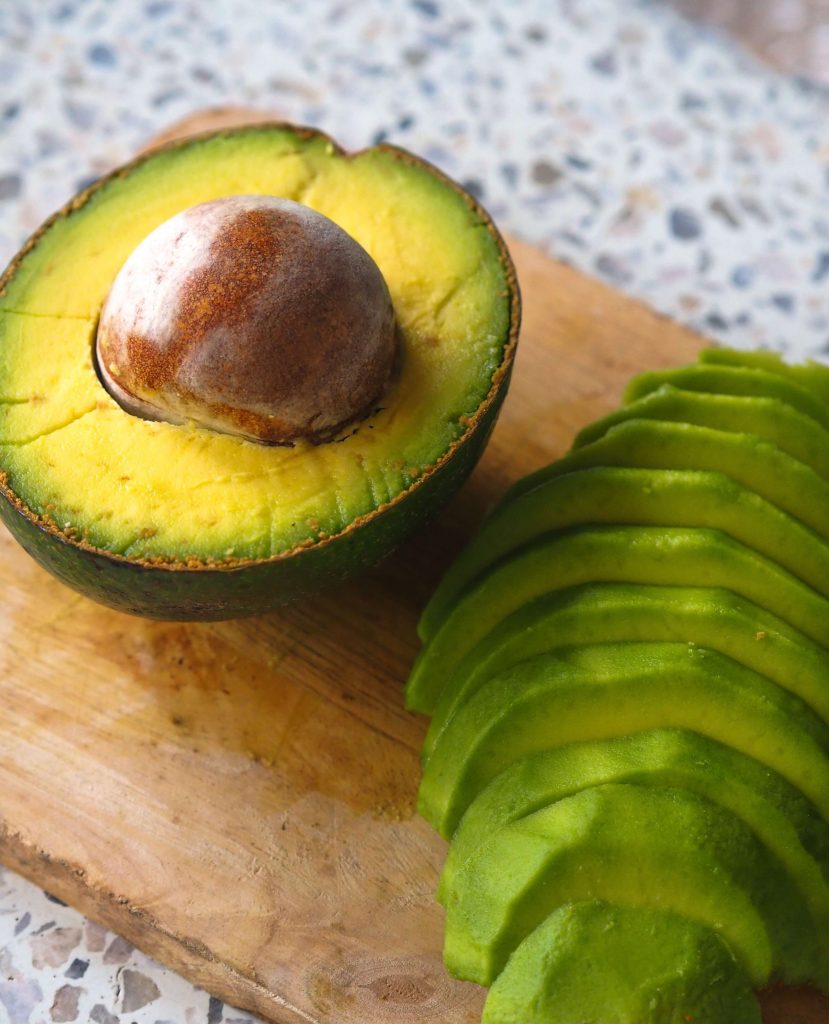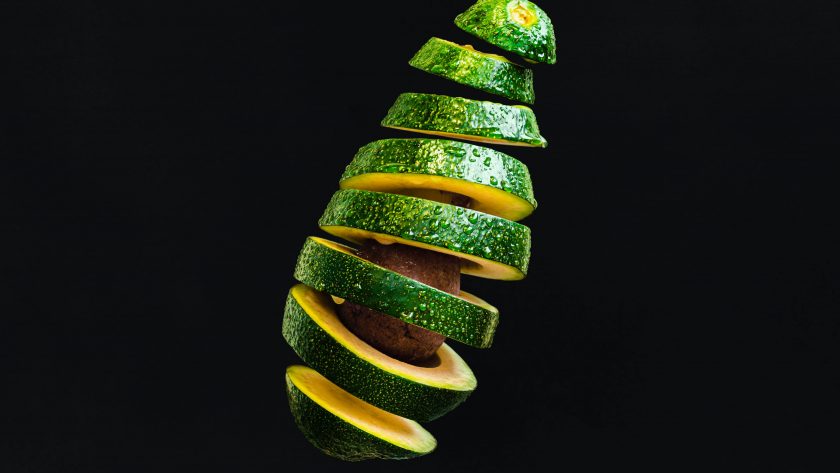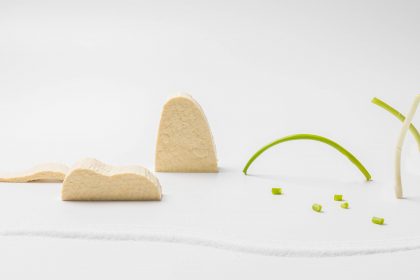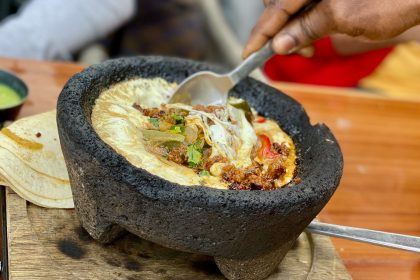Are you someone who enjoys avocados but is unsure whether you can still eat them if they have brown spots? Well, can you eat avocado with brown spots? As an avocado enthusiast myself, I’m excited to share with you everything you need to know about eating avocados with brown spots.
- Identifying Brown Spots on an Avocado
- What Causes Brown Spots on an Avocado?
- The truth about brown spots on avocados
- Nutritional value
- How to tell if an avocado is still good to eat
- Summary
- How to properly store avocados to prevent brown spots
- Ways to use avocados with brown spots
- How Long Can You Keep an Avocado with Brown Spots?
- Tips for Selecting Fresh Avocados
Short answer is Yes!
First and foremost, it’s important to understand that brown spots on an avocado do not necessarily mean that the fruit has gone bad. In fact, brown spots – or “bruising” – can simply be a result of the avocado being dropped or bumped during transportation.
While it may not look as appealing, bruising does not affect the taste or quality of the avocado. In fact, some people even prefer eating avocados with brown spots because they tend to be riper and creamier than those without.
Identifying Brown Spots on an Avocado
Avocados are a popular choice for eating, cooking, and making homemade skincare products. However, sometimes you may notice brown spots on the avocado which can make you wonder if it is safe to consume.
Brown spots on an avocado can indicate different things, depending on the intensity and distribution of the discoloration. Here’s how to identify brown spots on an avocado:
- Small Spots: If you notice small brown spots on your avocado, it usually indicates an early stage of decay. These spots are limited to a small area and can be easily cut away. Furthermore, if there are only a few small brown spots, the rest of the avocado should still be edible.
- Large Spots: If your avocado has large brown spots spread throughout its flesh, it indicates that the fruit is overripe and has started to rot. An overripe avocado that is mostly brown in color is best to throw away. Moreover, the texture of the fruit may not be appealing, and it has a sour smell.
- Dark Spots: Avocados can have dark spots that look almost black. It can be a cosmetic issue or visual cue for spoilage. Dark or black spots on the surface of the avocado or concentrated mainly around the stem area may indicate that the fruit was mishandled or dropped, leading to bruising. If the dark spots are also mushy to the touch, the avocado has probably gone bad.
Remember to always carefully inspect your avocado before using it and discard the entire fruit if in doubt. Once cut, always eat ripe avocados soon or store them in the refrigerator for a short time. Change the taste and feel of your home-cooked meals with this versatile fruit and add some texture and creaminess to your dishes.
But what do those brown spots actually signify? And should we be wary of them when deciding whether or not to eat an avocado?
First things first: brown spots on avocados are usually a sign of bruising or over-ripening. Essentially, as the avocado ripens, it becomes softer and more delicate, which means that it’s more prone to bruising. Those bruises can then turn into brown spots. While brown spots can make an avocado look less appealing, they are generally harmless and won’t affect the flavor or nutritional content of the fruit. So, in short: yes, you can still eat an avocado with brown spots.
That being said, there are some exceptions to this rule. If the brown spots on your avocado are particularly large or sunken in, it could be a sign of rot. In this case, it’s best to avoid eating the avocado altogether. Additionally, if the avocado has an unpleasant odor or feels excessively mushy, this could also be a sign that it’s gone bad.
Overall, my advice when it comes to brown spots on avocados is to use your best judgment. If the brown spots are minor and the avocado looks and smells fine, then go ahead and enjoy it!
What Causes Brown Spots on an Avocado?
Avocado is a beloved fruit by many, and for a good reason. It’s the perfect addition to salads, smoothies, sandwiches, and more. But one thing that can be particularly concerning for consumers is brown spots on the surface of the avocado. As an enthusiast in food and health, I have researched and learned about the causes of brown spots on avocados.
The brown spots on the avocado are an indication that the fruit is starting to spoil. There are several reasons why the brown spots form on the avocado’s skin and flesh. This discoloration can be caused by various factors, including:
- Bruising: Dropping the avocado can cause the fruit to become bruised. The bruised areas will appear as dark brown spots.
- Disease: Avocado trees can sometimes be affected by fungal diseases that create black spots on the fruit’s skin.
- Ethylene gas: Avocados produce ethylene gas, which accelerates the ripening process. However, if left to ripen for too long, brown spots can appear.
- Sun Damage: If avocados are left to ripen on the tree for too long, they may be exposed to too much sun, causing brown spots on the skin.
It’s essential to note that the brown spots on the avocado are mainly a cosmetic issue and do not mean the fruit is inedible. However, consuming avocado with brown spots can affect the taste and texture of the fruit, resulting in a less enjoyable eating experience.
Brown spots on avocados are pretty common and can result from several factors such as sun exposure, disease, ethylene gas, and bruising. While they may not necessarily make the fruit inedible, it’s essential to check the quality of the avocado before consuming it. With this information in mind, you’ll be able to enjoy your avocados while avoiding any unpleasant surprises.
The truth about brown spots on avocados
When I first started eating avocado, I was hesitant to consume those with brown spots. I thought they were rotten, and I should throw them away. However, I later learned that this is not the case.
Avocado with brown spots is safe to eat. The brown spots form as a result of oxidation, which is a natural process caused by exposure to air. This does not affect the nutritional value of the avocado. In fact, avocados with brown spots may be even better for you than those without. If you asked yourself Can You Freeze Provolone Cheese, we have asticle for you!
Nutritional value
Avocados are a nutrient-dense food, packed with vitamins and minerals that are essential for good health. They are high in monounsaturated fats, fiber, potassium, and magnesium, and contain a range of other nutrients, such as vitamin E, vitamin K, vitamin C, and vitamin B6.
Despite the brown spots, avocados are still an excellent source of these nutrients. According to the USDA FoodData Central, a medium-sized avocado contains:
- 250 calories
- 23 grams of fat
- 12 grams of fiber
- 3 grams of protein
- 660 milligrams of potassium
- 58 micrograms of vitamin K
How to tell if an avocado is still good to eat
While brown spots on an avocado are safe to eat, there are other signs that you need to look out for to know if your avocado is still good. These include:
- Color: a ripe avocado should be dark green. If it’s brown, it’s overripe
- Texture: a ripe avocado should be slightly soft to touch, but not mushy
- Stem: if the stem comes off easily when you try to remove it, it’s ripe. If it’s difficult to remove, it’s not ripe yet
- Smell: a ripe avocado should have a pleasant, light scent. If it smells sour or rotten, throw it away.
Summary
Brown spots on an avocado are not a cause for concern. They are safe to eat and do not affect the nutritional value of the fruit. When choosing avocados, pay attention to other signs of ripeness to ensure that they are still good to eat. Incorporate avocados into your diet for a healthy dose of essential vitamins and minerals.
How to properly store avocados to prevent brown spots
- Choose the right ripeness: When shopping for avocados, it’s important to consider when you plan to consume them. If you’re looking to eat them soon, choose avocados that are slightly softened to the touch. However, if you’re planning on eating them later in the week, opt for firmer avocados that will ripen over time.
- Separate from ethylene-producing fruits: Avocados are highly sensitive to ethylene, a gas produced by certain fruits such as apples and bananas. To prevent the release of ethylene gas, it’s important to store avocados separately from other fruits.
- Store in the fridge: To slow down the ripening process and extend the lifespan of your avocados, store them in the fridge. This is particularly important if you’ve purchased ripe avocados and aren’t planning on eating them right away.
- Use plastic wrap: Once you’ve cut open an avocado, it’s important to prevent further exposure to oxygen, which can lead to brown spots. Simply wrap the avocado tightly in plastic wrap, ensuring that there are no air pockets.
By following these simple tips, you can enjoy perfectly ripe and spot-free avocados every time.
Let’s talk about avocados with brown spots. If you’re like me, you hate to throw away perfectly good food, and that includes avocados. Sure, brown spots might not look the best, but that doesn’t necessarily mean the avocado is bad.
In fact, there are a few ways you can still use avocados with brown spots and get the most out of them.
Ways to use avocados with brown spots
- Make Guacamole: Brown spots can be easily removed from avocados and using the good parts to make guacamole. It’s a great way to use up avocados that might not be great for slicing onto your toast, but are still perfectly fine to eat.
- Add them to Smoothies: Avocados can add a nice and creamy texture to smoothies, and the brown spots won’t even be noticeable. Plus, avocados are high in healthy fats and other essential nutrients, making them an excellent addition to any smoothie.
- Bake with them: If you’re feeling adventurous, try baking with avocados with brown spots. You can use them in place of butter or oil in many recipes, which can lead to a healthier and more nutritious baked good.
- Use them in Dressings and Sauces: Avocados can be pureed and used in dressings and sauces to add creaminess and flavor. The brown spots won’t affect the taste or texture, so it’s a great way to use up avocados that might not be ideal for eating on their own.
As you can see, there are many ways to use avocados with brown spots that don’t involve throwing them away. So next time you have a brown-spotted avocado, don’t be afraid to get creative and try out one of these ideas. You might just be surprised at how delicious and versatile avocados can be!
How Long Can You Keep an Avocado with Brown Spots?
When it comes to eating avocados, timing is everything! So, how long can you keep an avocado with brown spots? The answer may surprise you.
First of all, it’s important to note that brown spots on an avocado don’t necessarily mean the entire fruit has spoiled. In fact, brown spots can simply indicate that certain parts of the avocado have been exposed to air, which causes oxidation and discoloration. This process is natural and doesn’t necessarily affect the quality or taste of the fruit.
That being said, brown spots can be an indication that the avocado is beginning to spoil. So, to determine how long you can keep an avocado with brown spots, you need to consider a few factors:
- How many brown spots are there? If there are just a few small spots, you can simply cut them off and enjoy the rest of the avocado. However, if there are many spots or if the spots are large and deep, the avocado may not be salvageable.
- How ripe is the avocado? A ripe avocado with brown spots will spoil more quickly than an unripe avocado. So, if your avocado is already quite ripe, you’ll want to use it as soon as possible.
- How have you stored the avocado? Avocados are best stored at room temperature until they’re ripe, and then they can be kept in the fridge for a few days. If you’ve already cut the avocado, be sure to wrap it tightly in plastic wrap or store it in an airtight container to prevent it from spoiling too quickly.
In general, if your avocado has just a few small brown spots, is still relatively firm (but not rock hard), and has been stored properly, it should be safe to eat for at least a day or two. However, if the brown spots are large or the avocado is very ripe and has been stored for several days already, it’s probably best to err on the side of caution and toss it out.

So, there you have it – everything you need to know about how long you can keep an avocado with brown spots. Remember, when it comes to avocados, timing is key, so be sure to keep an eye on any brown spots and use your avocados as soon as possible for the best taste and quality.
Tips for Selecting Fresh Avocados
Selecting the perfect avocado can be an overwhelming task for many people. It requires experience to know the right one for your plate. Nonetheless, with the following tips, choosing a fresh ripe avocado with no brown spots will be a walk in the park:
- Check the color of the avocado
A green color on the outside of the avocado usually indicates the fruit is immature. A darker green or black color is usually a sign of ripeness. However, color alone doesn’t determine ripeness, so check the other factors as well. - Check the skin’s texture
Run your fingers over the surface of the avocado. The skin should be smooth and free from bruises or dents. If it feels bumpy or squishy, it indicates that the fruit is either too ripe or overripe. - Gently press the avocado
Apply gentle pressure with your fingers to the avocado’s top where the stem was attached. If it’s slightly firm but gives way when pressed, then it’s perfectly ripe. If it is too soft, then it’s overripe and might have brown spots on it. - Look at the stem
If the stem is missing, then it’s likely a sign that the fruit is overripe. If the stem is still attached and comes off easily without too much force, it’s ready to eat. - Buy avocados in a bundle
Buy avocados in a netted bundle or a bag to avoid buying an already damaged one. The bundle minimizes the impact of handling during transportation, keeping most of them intact.
Keep in mind that avocados, like all fruits, ripen best at room temperature. You can store unripe avocados in brown paper bags to speed up the ripening process. Now that you know how to identify a fresh ripe avocado, may your dishes be delicious, colorful, and a delight to the eyes.
It’s important to remember that the appearance of an avocado with brown spots might not be as appealing, but it can still taste just as delicious as an avocado without brown spots. Don’t let the appearance discourage you from enjoying this nutrient-rich fruit.
I hope this article has provided you with valuable information about the safety of eating avocados with brown spots. As an avocado enthusiast myself, I’m excited to continue experimenting with this versatile fruit and exploring new avocado-based recipes! 🙂





